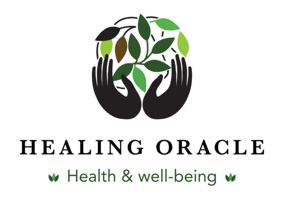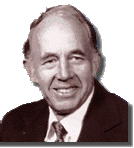| Before 1957, the only physiological significance of the element selenium was thought to be its toxicity. A watershed change in the concept of selenium metabolism occurred when it was shown to prevent liver necrosis in rats. Selenium was also once thought to be carcinogenic, but now, at least in certain forms, it is considered to be an anticarcinogen.
In the late 1960s, epidemiological surveys suggested an inverse relationship in the incidence of certain cancers, particularly of the breast, and the selenium content of the plants growing in different regions of the United States representing low, adequate, and high selenium areas. Soils of the Pacific Northwest, the upper Midwest, the Northeast, and along the Atlantic coast do not contain enough selenium for the plants growing there to provide protection against selenium deficiency in grazing animals. Vegetables grown in these places also contain low levels of selenium. In other areas of the United States, such as the Rocky Mountain states, selenium is present at elevated levels in soil and, consequently, in plants.
In the 1970s and 1980s, the relationship between selenium and cancer in laboratory animals was extensively investigated, resulting in discoveries that several selenocompounds inhibit or retard carcinogenesis. These experiments in animal carcinogenesis indicated that super-nutritional levels (about 30 times the nutritional requirement) of selenium gave the greatest protection. About 0.1 microgram of selenium per gram of diet is considered to meet the nutritional needs of animals. (1,000 micrograms = 1 milligram; 1,000 milligrams = 1 gram).
Nearly 200 animal studies have been conducted to evaluate the effects of super-nutritional levels of selenium on experimental carcinogenesis using chemical, viral and transplantable tumor models. Of these, two-thirds have found that high levels of selenium reduced the development of tumors at least moderately (by 15 to 35% compared to controls) and in most cases very significantly (more than 35%). Only in a very few cases was selenium found not to be effective.
We now know that there are at least eight enzymes in animals that require selenium for normal activity and that there are two other well-characterized seleno-proteins for which a metabolic function has not yet been discovered. Most of the identified selenium-containing enzymes exert antioxidant activities, such as glutathione peroxidase. The activities of the seleno-enzymes or the levels of the seleno-proteins in blood or tissues have been used to assess selenium status in animals as well as humans. Experiments have also revealed that the physiological and biochemical functions of selenium can be altered by other dietary factors, including vitamin E.

Vegetables and nuts with high sulfur content that are good candidates for enrichment with selenium. |
In humans, like other animals, selenium supplementation has appeared to offer some anticancer protection. So far; three human studies on the relationship of selenium supplements to cancer have been completed. In the first, selenium was added to salt and shown to significantly reduce the incidence of liver cancer in a Chinese population. Subsequently, it was shown that five years of supplementation with selenium, vitamin E, and carotene significantly reduced the incidence of stomach and esophageal cancer in a Chinese population. However, this experimental design did not allow one to determine whether selenium itself, the two vitamins, or the combination of these substances was responsible for this significant effect. |
Since there are many populations in China who live in selenium deficient areas, it was also not clear whether supplemental selenium merely corrected a deficiency or provided protection against cancer. The third trial on selenium and cancer in humans was conducted in the United States by L.C. Clark et al. (published in the Journal of the American Medical Association in 1996) and gave, again, positive results. This study is especially significant because Americans consume enough selenium in the diet to meet their nutritional needs. On average, Americans consume about 100 micrograms of selenium daily from dietary sources, and in this human trial, supplements of 200 to 400 micrograms per day were given.
The cancer incidence was lowered by about the same degree in those subjects taking 200 or 400 micrograms per day, suggesting that 200 micrograms of additional selenium is sufficient to inhibit certain cancers. Combined with the amount consumed dietarily, the beneficial level of intake was about 300 micrograms per day. As can be seen, the incidence of lung, colorectal, or prostate cancers was reduced significantly. Interestingly, skin cancer, which was the target cancer of the study, was not affected by selenium supplementation.
A case control study conducted in Finland by J.T. Salonen et al. (published in the American Journal of Epidemiology in 1984) also supports a protective effect of selenium against cancer. In that study of a random sample of more than 8,100 persons followed for 6 years, low serum levels of selenium correlated with increased total cancer mortality. The relative risk in low selenium subjects appeared to be greatest if they also had relatively low plasma levels of vitamins A and E, suggesting, again, that other factors influence the anticarcinogenic effects of selenium.
Should people take supplemental selenium for cancer prevention? Even though the results thus far look encouraging, it is premature to make a specific recommendation for cancer prevention. Selenium supplements, many derived from selenium-enriched yeast, are commercially available. In the yeast-derived products, the selenium is present in an organic form. Recently, a supplement with inorganic selenium has been introduced commercially, but the experimental data indicate that inorganic forms of selenium are less effective than organic ones. Special selenium-enriched vegetables may be the most effective form of selenium intake for cancer inhibition. These are not presently available for human consumption, but are predicted to appear on the market within the next few years.
Animal studies have shown that selenium-enriched onions, broccoli, garlic, and Brazil nuts are very effective in the inhibition of tumors. The major seleno-compound in these foods has been shown to be one of the most effective seleno-compounds tested thus far against chemical carcinogenesis in animals.
If one chooses to take selenium supplements to reduce the chance of contracting cancer, it is important that the maximum daily intake from all sources be less than 400 micrograms. Toxic effects of excessive selenium include hair loss, fatigue, immune impairment, weakened fingernails, and other problems. Since the trial conducted in the United States indicated that 200 micrograms per day was just as effective as 400 micrograms per day in preventing certain types of cancer; there is no compelling reason to take a daily amount of selenium greater than 200 micrograms. |



